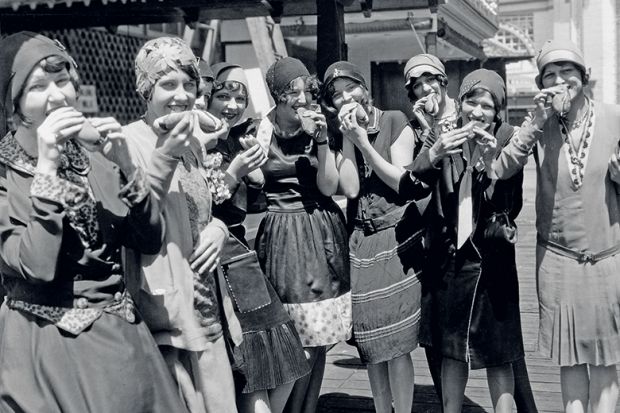Among a series of talks in Bermondsey, South-East London, in 1922, one speaker chose as his topic “The Girl with the Limited Outlook”, taking aim at those who “hung about street corners and whistled at boys”. As youthful behaviour goes, that seems fairly mild stuff, but Katharine Milcoy is interested in the ways that young women of a certain age and class were identified as a problem, partly on the grounds of what they chose to do with their leisure time.
The “invention” of the teenager has commonly been understood as a product of affluence and consumerism in the 1950s. Milcoy, however, suggests that working-class girls and young women between the wars were already pioneering a teenage lifestyle, shaping new identities and experiences through fashion and entertainment. Focusing on those between the ages of 13 and 20, her study examines the interval between childhood and motherhood. She asserts that these girls (as she always refers to them) were “more than wives and mothers in the making”, aspiring to a more glamorous identity inspired by stars on the big screen and refusing to be cowed by elders’ warnings about the moral peril of cocktails and lipstick.
Much of the book is taken up with summarising existing interpretations of leisure, popular culture, class and gender, and the resulting discussions are not always directly relevant to Milcoy’s stated focus on working-class girls – let alone the specific locale of Bermondsey, which emerges as a case study. But a series of interviews from the late 1990s involving local women born between 1907 and 1918 offers possibilities for understanding what leisure meant to them, and how they spent their time and money.
Milcoy characterises Bermondsey in the interwar years as a place with plentiful employment opportunities for young women, in highly mechanised production and food processing. Repetitive, and not that well paid, the work was at least readily available and presented an attractive alternative to domestic service. The workplace had its own camaraderie, and some surprising perks: among the leisure facilities available at the Peek Frean biscuit factory in the early 1920s was a rifle range.
Having fun did not necessarily cost a lot of money. Wheezes such as “bunking in” through the exit at the cinema or fooling doormen at dances by flashing tickets of roughly the right colour allowed young women to enjoy a commercialised world of entertainment that would otherwise have exhausted their modest incomes. Girls’ clubs were anxious to fill young women’s spare time with more constructive, respectable pursuits, such as evening classes teaching domestic skills. Courses in dressmaking had greater appeal, as an affordable route to acquiring the latest fashions.
In the absence of any detailed reflection on the use of oral history, the interviews provide a source of description and anecdote, and even in this capacity they play a relatively small part in the text. This is a pity, because the opinions of working-class young women have so often been drowned out by the views of journalists and do-gooders. When they do get a chance to speak, the interviewees’ recollections tend to be sweetly staid: memories of reading boarding-school stories at the public library; scribbling down the lyrics of their idol’s latest song; pie-and-mash suppers after a night out dancing.
Clare Griffiths is professor of modern history at Cardiff University.
When the Girls Come Out to Play: Teenage Working-Class Girls’ Leisure between the Wars
By Katharine Milcoy
Bloomsbury
176pp, £65.00 and £19.99
ISBN 9781474279598 and 9581
Published 7 September 2017
后记
Print headline: Finding freedom in frivolous fun




